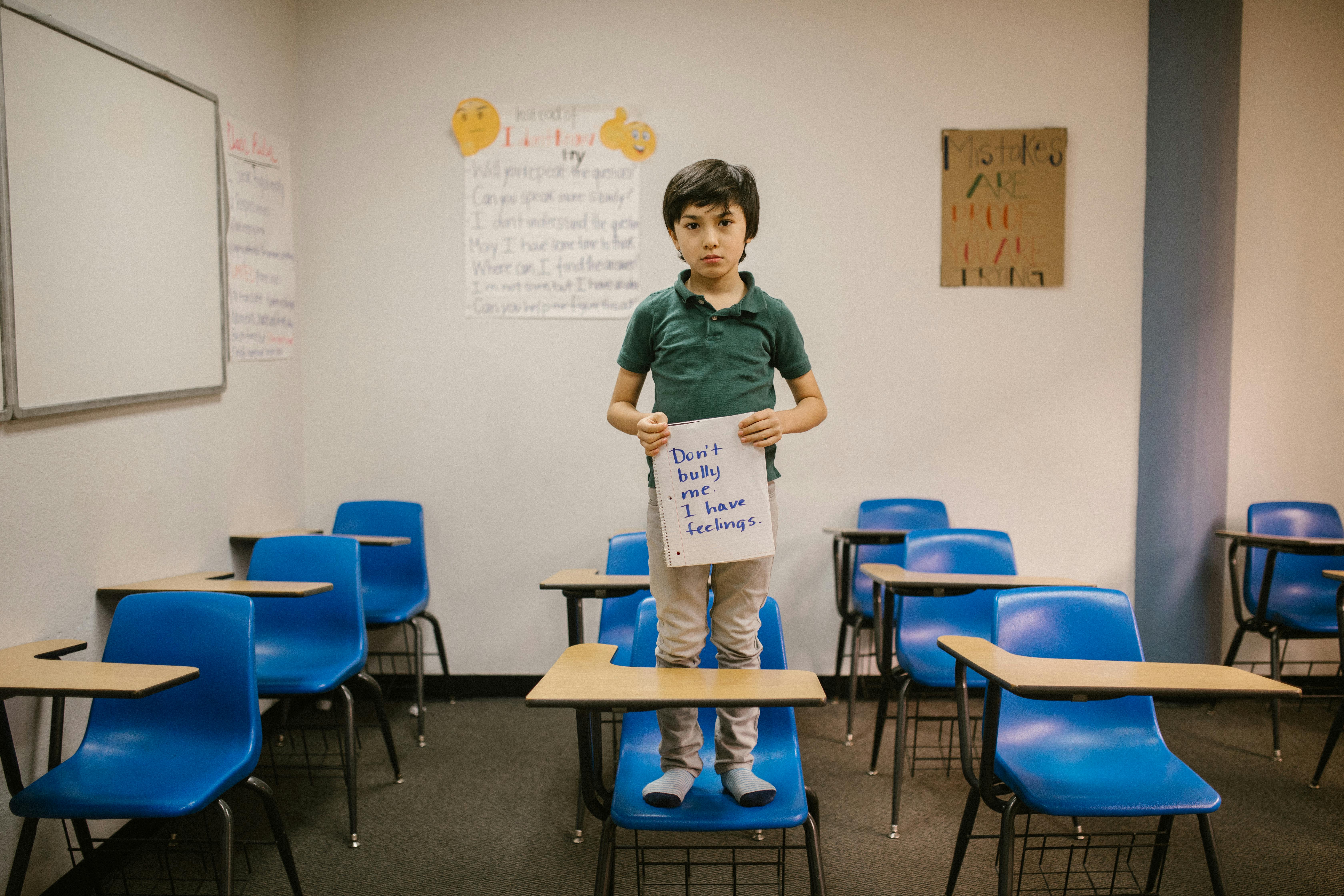Raising a toddler can be very challenging!
A toddler is a young child – usually a bit older than a baby (between one and three years old) – who is still learning how to walk.
These little humans will test your limits and say “no” a lot. Temper tantrums and aggression are very common with them.
Your toddler may hit, kick, or throw things when angry. Defiance is also normal at this age. Your toddler wants to be independent but is still learning.
Discipline is important for them. It helps them learn what is right and wrong. With discipline, your little one will grow up to behave well.
But before we talk about how to discipline them, you should have a proper understanding of what the word ‘discipline’ means.
The word ‘Discipline’ seems to have several origins, but a common one is the Latin word ‘discipulus’ which translates as ‘to learn’, or ‘disciple’.
To disciple is to train.
To discipline is to guide, or teach by instruction and exercise in order to bring to a state of order and obedience.
Discipline is not about punishment – it’s about teaching self-control, respect, and the difference between right and wrong.
Without it, toddlers can really struggle to manage their big emotions and impulses.
Don’t get me wrong!
I’m not saying that there should be no consequences for breaking the rules.
I’m saying the focus when it comes to discipline of the toddler is teaching and modeling what to do to ensure obedience to rules and proper habits.
It’s not easy handling the behaviors of toddlers. But staying calm and setting clear rules is key. This will teach your toddler self-control as they develop.
In this post, we will look at research-backed ways to guide your toddler’s behavior.
I will share effective discipline strategies to handle common parental challenges caused by toddlers like tantrums, aggression, and defiance.
The techniques are easy to use and help toddlers learn how to behave well. They promote healthy development while keeping your sanity as a parent!
By the end, you’ll have a toolbox of discipline tactics to tackle even the toughest toddler troubles.
Read on! Let’s dig into some effective strategies:
1. Use Positive Reinforcement
Positive reinforcement is very effective for toddlers. It involves rewarding a good behavior to encourage its reoccurrence. Research shows that this shapes behavior better than punishment alone.
When you reward your toddler with praise or small incentives after they do something, it encourages them to do it again in the future.
For instance, you can give your little one a high five, hug, or say “Great job!” when they listen or comply with requests or when they say ‘Thank you’ after receiving something.
Be specific with your praise and link it to the good action. For example, say “You washed your hands after painting. Good girl!”
This helps toddlers understand why they are being rewarded. Make sure praise is genuine so they can feel your pride in them.
For rewards to work well, give them consistently right after great behavior happens. This creates an immediate positive association in their mind.
Do not praise or reward tantrums, aggression, or defiance unless you want these behaviors to continue.
Stay calm, follow through with consequences if needed, and then focus on reinforcing the good behaviors you see after.
Positive reinforcement strengthens the parent-child bond too!
2. Set Clear Boundaries and Expectations
Explain your home’s rules at your toddler’s level with simple language.
For example, “We hold hands in parking lots” or “We sit quietly and write in Church.” Demonstrate the expected behavior too. Keep the number of rules small.
Focus on safety and respecting others.
Establishing rules and routines gives toddlers security. Consistent boundaries also make discipline more effective.
Many parents post visual schedules to help toddlers understand the daily routine.
Pictures show when it’s time to eat, play, bathe, and more. Consistent schedules create the predictability your little one craves.
Maintain routines and rules with follow-through. Give one reminder of the rule, then calmly enforce the consequence if not obeyed.
Remain patient and understanding. Remember, your toddler is still learning. Repeat reminders if needed.
Be a positive role model as well. Follow the rules yourself and apologize if you slip up. Admit when you’re wrong to foster accountability.
Explain the consequences if they choose not to follow the rules or comply with reminders. With time and consistency, routines and rules become habits.
Clear boundaries in a nurturing home let toddlers explore freely and independently knowing what is allowed.
This reduces power struggles as they understand what you expect of their behavior.
3. Redirect and Distract
Redirection and distraction are useful techniques to curb challenging toddler behavior.
This strategy diverts the child from an unwanted action into a preferred, more positive one.
When a tantrum starts, swiftly redirect your toddler to an engaging activity before it escalates. Have go-to toys or books ready for distraction.
Praise the calmer activity that you distract them with to reinforce that behavior instead.
If defiance occurs, try diverting their attention. For example, your toddler refuses to get dressed. Ask for help finding specific clothes from the drawer.
While searching, they may forget to be stubborn and allow dressing with less fuss.
Spontaneous redirection works magic too. When anger starts over not getting a biscuit, redirect them to the sink to “help” wash your hands, then offer a hug.
Their mood changes with a change of focus to a more pleasant task.
When outside, redirect energy from hitting into an active play like kicking a ball.
Channel frustration constructively instead of negatively. Praise their enjoyment of appropriate activities.
Redirection is often more effective than discipline during outbursts. It solves the immediate issue while avoiding power struggles.
After distraction ends a tantrum, discuss why certain behaviors won’t be tolerated once they calm down.
Say something simple like “Kicking is not okay. We can talk with our words when we are not happy.”
Let’s say they are throwing toys, divert them to looking at books together and naming the pictures.
When regulated, explain “Throwing toys can hurt. Let’s keep our toys on the floor so they don’t get broken.”
When screaming “no” continuously, redirect energy into dancing or ball play.
Afterwards say “I understand you wanted a biscuit, but screaming when you’re upset is not allowed in our house.”
Keep explanations very brief and simple for a toddler. Use concrete language to define the off-limits behavior while reinforcing alternate suitable ways of expressing big feelings.
Praise any prosocial choices they made instead.
With practice, less redirection is eventually needed. Its positive approach helps in toddler development.
4. Use Time-Outs Judiciously
Time-outs are a useful discipline strategy when used properly with toddlers.
The goal is not punishment, but giving them time to calm down after unsafe, unwanted, or repeated behaviors.
During time-outs, you confine your toddler to a boring area away from fun toys or siblings. One minute per year of age is typical.
So a two-minute time-out is appropriate for a two-year-old. Remain calm and keep interactions with them minimal during the timeout.
Explain why they are in time-out using simple language before putting them there.
For example, “You threw the toy at Sandra. You have hurt her. Now you will sit quietly in time-out until you can play nicely.”
To make time-out sessions more effective:
Make sure to closely supervise from nearby. Toddlers cannot be sent to their rooms unsupervised due to safety concerns.
Keep timeouts short and only use this method for challenging issues after redirection fails.
Praise them or ask them to apologize when the time-out is over before they rejoin activities well-behaved.
Consistency is key, so time-outs don’t seem arbitrary. Typical behaviors like aggression, defiance, or property damage are appropriate for time-out.
But occasional accidents or mild testing do not warrant punishment.
Give reminders of the rule before timeout. This establishes a clear cause-and-effect between the consequence and unwanted act.
With time, you will no longer need time-outs. Natural consequences will teach your toddler self-control.
5. Foster Emotional Intelligence
Toddlers are not too young to learn about their feelings and how to handle them appropriately. In fact, they need to learn about their emotions from this tender age.
Identifying and expressing emotions healthily sets the stage for empathy, confidence, and strong relationships.
Join them in reading books showing a range of emotions using simple language.
Point to pictures and have your toddler name what the character feels.
You can also make faces or gestures in the mirror to show feelings. This builds emotional vocabulary.
When powerful emotions arise, validate your toddler’s feelings with empathy.
Say something like “I can see you are really angry because you wanted to play outside.” Putting words to feelings helps them understand.
Model regulating yourself during frustrations as well. Take deep breaths and explain that when angry, we need to stay calm.
They will learn to self-soothe by watching you.
Role-play scenarios so your toddler practices identifying emotions and solutions.
How do you think he feels when his toy breaks? What could he do next time? Offer hugs and reassurance to encourage opening up.
Validate feelings without condoning misbehavior.
Say “I know you’re upset, but we don’t hit. Use your words to tell me how you feel.”
Affirm their value even when correcting to strengthen the bond.
Fostering emotional intelligence sets toddlers up for success.
It lays the foundation for respecting others, problem-solving conflicts constructively, and developing self-confidence as they grow.
Alternative Discipline Methods for Toddlers
- Loss of privileges:
Remove access to a favourite toy or activity for a short period as a natural consequence of the unwanted behavior.
- Redirected walking:
Gently take their hand and lead them to walk with you while you talk calmly about expectations. Then return to play.
- Positive practice:
Have them practice positive behaviors, like using words to ask for a toy instead of grabbing. Praise all attempts.
- Ignoring:
This works especially when toddlers choose to scream or other tantrums to get what they want. Remain near but refuse eye contact or response during unwanted behavior to avoid rewarding it with attention.
- Compassionate conversation:
When they are calm, explain how their actions made others feel. Ask how they could do better next time.
- Take a break:
Remove just the child from the situation briefly, not as punishment but to de-escalate emotions before problem-solving.
The key to instilling discipline in toddlers is finding options that are appropriate for the child’s age and individual needs.
Experiment to discover what techniques work best to redirect them while still maintaining healthy boundaries. Be patient and consistent.
If you are a Nigerian parent and you have read this post to this point, you’re probably feeling disappointed to have not read about spanking or flogging to instill discipline.
Remember how we defined discipline at the beginning of this post? Discipline, in this context, is more about teaching and modeling, not necessarily about inflicting physical pain.
The consensus from medical and child development experts is that spanking is counterproductive and harmful, even if done rarely. Some key reasons are:
- Hours after you spank them, toddlers are too young to understand the connection between the spanking and the behavior that prompted it. Their brains are still developing and they learn best through positive guidance and modeling, not fear or pain.
- Spanking can damage the parent-child relationship and cause unnecessary stress through fear or traumatization. It does not promote healthy communication.
- It does not teach replacement behaviors and can worsen the unwanted conduct. Toddlers may act out more from anger or frustration.
- Over time, spanking has been linked to increased aggression, antisocial behavior, mental health problems, and poorer child-parent relationships.
There are many effective discipline techniques that don’t rely on inflicting pain, like staying calm, following through with natural consequences, distraction, redirection, and positive reinforcement of good behaviors.
While many of us might have been raised under harsh scenarios, experts agree that alternative methods of discipline that are respectful and age-appropriate are always preferable to spanking when correcting a child as young as a toddler.
Conclusion
In this post, we covered discipline strategies such as using positive reinforcement, setting clear rules and boundaries, redirecting troubling behaviors, employing time-outs cautiously, and fostering emotional intelligence.
The most effective approaches combine patience, empathy, and follow-through.
While toddlers test limits, strong and loving guidance helps in their healthy development.
A balanced discipline approach focusing on teaching instead of punishment will benefit both parents and children immensely. It builds cooperation and respect.
I encourage you to try incorporating some of these tips and techniques into your parenting to make discipline a positive learning experience.
Be consistent and remember that toddlers are still learning self-control.
With time and effort, challenging behaviors can be addressed in a warm, nurturing way that strengthens the toddler-parent bond.
In preparation for their growth, you can read parental tips for communicating teen.
Did you find this post helpful?
Have you tried any of these methods in handling your toddler? What was your experience like? I would love to hear from you.
Please like and share this post with others. With a little patience and the right tools, effective discipline is well within reach!





Add comment